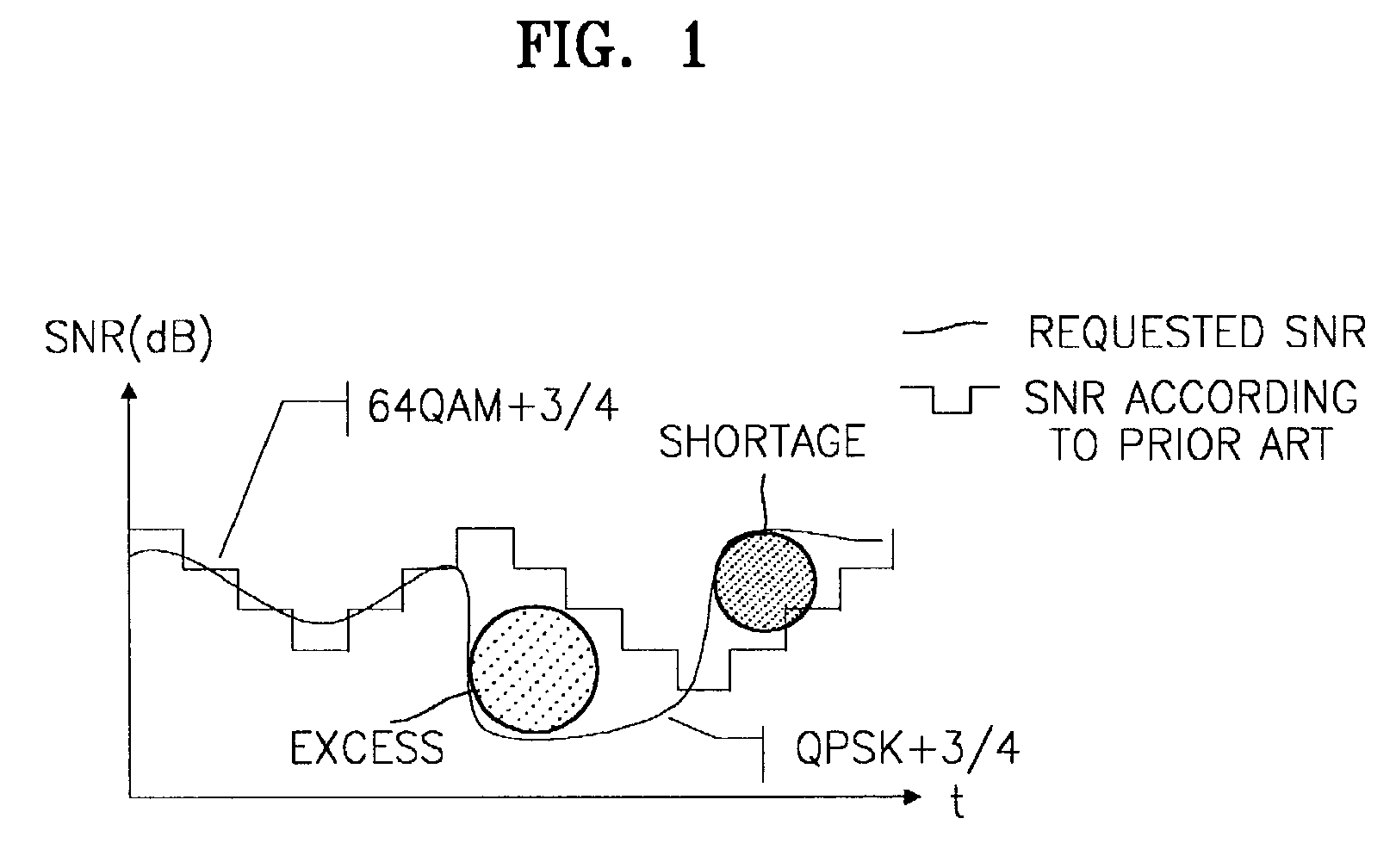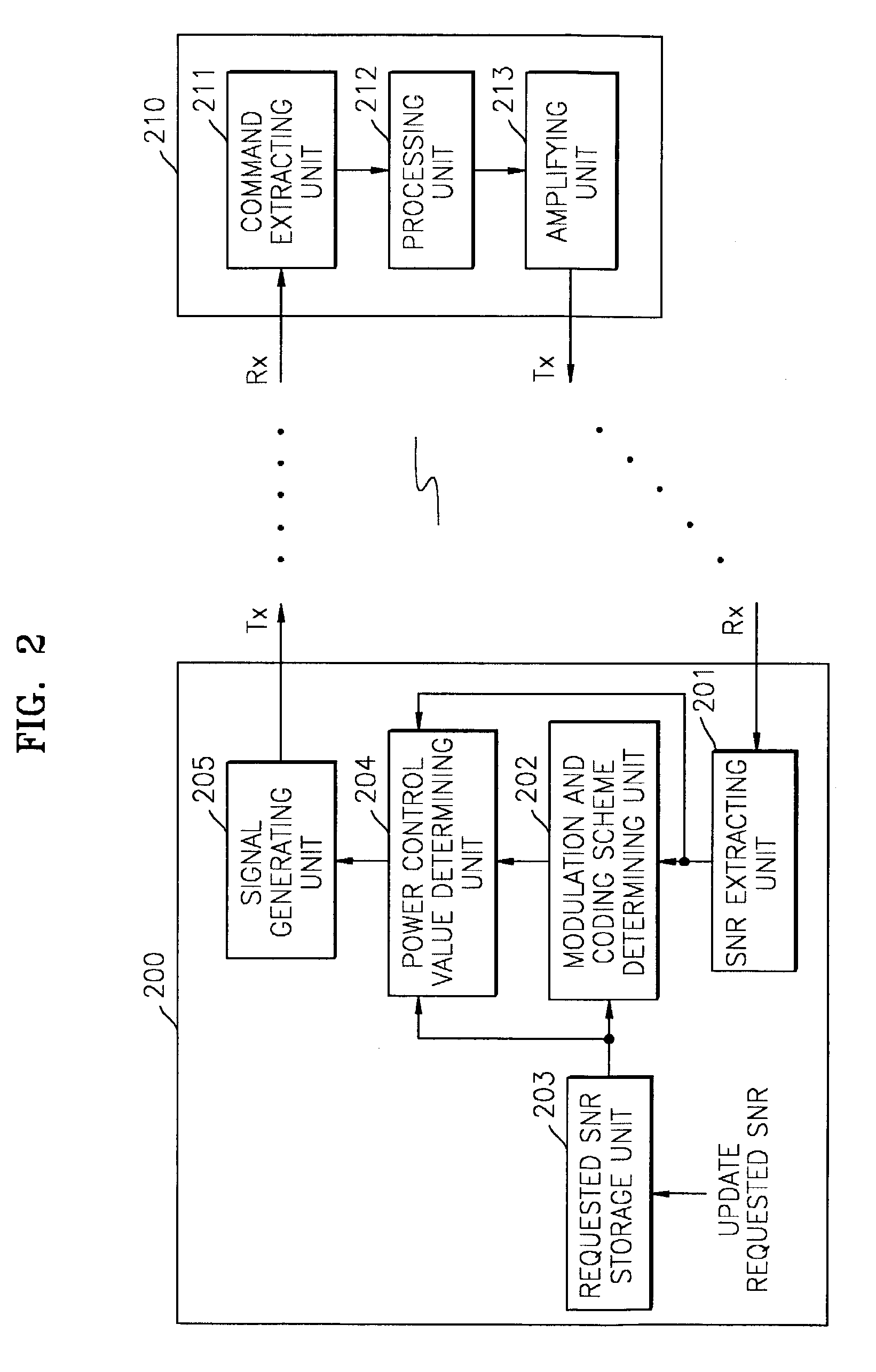Power controllable wireless mobile communications system of adaptive modulation and coding scheme and method therefor
a wireless mobile communication system and wireless mobile communication technology, applied in the direction of power management, phase-modulated carrier system, transmission monitoring, etc., can solve the problems of not being able to meet the requested snr in real time, not being able to use modulation methods with high frequency efficiency, and not being able to adapt to the wide range of signals
- Summary
- Abstract
- Description
- Claims
- Application Information
AI Technical Summary
Benefits of technology
Problems solved by technology
Method used
Image
Examples
Embodiment Construction
[0018]Priority Korean Patent Application No. 2002-22703, filed Apr. 25, 2002, and entitled “Power Controllable Wireless Mobile Communications System of Adaptive Modulation and Coding Scheme and Method Therefor” is incorporated by reference herein in its entirety.
[0019]FIG. 2 illustrates a block diagram of a mobile communications system employing an AMC scheme according to the present invention, and FIG. 3 is a flowchart illustrating a mobile communications method employing the AMC scheme according to the present invention.
[0020]Referring to FIG. 2, a cell of the mobile communications system preferably comprises a base station 200 and a mobile station 210. The base station 200 preferably further includes an SNR extracting unit 201, a modulation and coding scheme determining unit 202, a requested SNR storing unit 203, a power control value determining unit 204, and a signal generating unit 205. The mobile station 210 preferably further includes a command extracting unit 211, a process...
PUM
 Login to View More
Login to View More Abstract
Description
Claims
Application Information
 Login to View More
Login to View More - R&D
- Intellectual Property
- Life Sciences
- Materials
- Tech Scout
- Unparalleled Data Quality
- Higher Quality Content
- 60% Fewer Hallucinations
Browse by: Latest US Patents, China's latest patents, Technical Efficacy Thesaurus, Application Domain, Technology Topic, Popular Technical Reports.
© 2025 PatSnap. All rights reserved.Legal|Privacy policy|Modern Slavery Act Transparency Statement|Sitemap|About US| Contact US: help@patsnap.com



